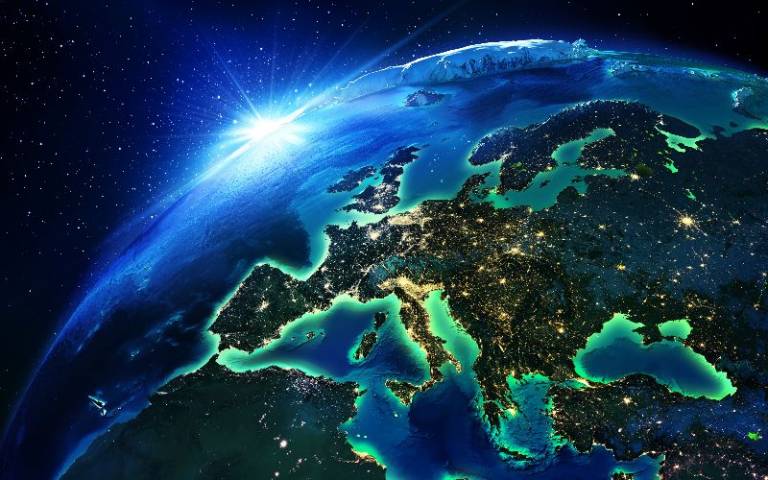Exhibition explores the carbon cycle from space
9 July 2021
Scientists from UCL are helping audiences to see how the earth ‘breathes’ and learn more about climate issues like the production and storage of CO₂ in a virtual experience for this year’s Royal Society Summer Science programme.

In an exhibit called How can we track and trace carbon from space? scientists from UCL, the University of Edinburgh and Plymouth Marine Laboratory show how satellites and other technologies can provide a better understanding of the value of natural assets like rocks, trees, soil, air, water and all living things.
Using an interactive map the public can visualise changes in vegetation levels and forest fires, gasses in the atmosphere like carbon dioxide and methane, or the location of ocean phytoplankton.
The team also map out some of the insights gained from their research using satellite sensing across marine, atmospheric and terrestrial environments and how these could help mitigate and understand the impacts of climate change. Practical applications include estimating potential carbon storage across whole regions using satellite data.
Back on the ground, a team led by Professor of Remote Sensing Mat Disney (UCL Geography) has demonstrated for the exhibition how the amount of carbon stored in large, older trees may be underestimated by 50% or more, potentially leaving them undervalued in decisions around felling and replanting trees.
Trees lock away carbon in their branches and trunk and in urban areas provide a host of wider benefits to humans and other species. But healthy older trees are often removed, where they are classed as being damaging – or obstructive – on the basis that they will be replaced with equivalent tree cover.
This has previously sparked protests in the UK in cities including Sheffield and Bristol. Professor Disney says large, old trees cannot be so easily replaced. “Trees in our urban forests are undervalued. A lot of plans focus on tree cover, but this push could come at the expense of large, mature trees.”
“If one large tree is replaced with 10 small ones, the canopy cover may increase, but carbon storage will go down, as will most of these other benefits like shade tolerance or slowing surface water run-off – at least until the new trees survive beyond 20 or 30 years old, which is far from a given.”
As shown, through the exhibition, Professor Disney’s work reveals that conventional models of tree carbon storage, which estimate tree mass from the diameter of the trunk, tend to significantly underestimate older trees where the “crown” of upper branches can make up the majority of their mass.
Now, using pulsed lasers (lidar) and drones, researchers can rapidly scan trees in 3D to ‘weigh’ them without cutting them down.
As part of their Summer Science work, Professor Disney’s group 3D-modelled a large plane tree outside the Royal Society’s building in London. They estimated the tree weighs around 23.3 tons – of which half the weight would be stored carbon – compared to 16.3 tons that would be estimated using conventional measures.
“On carbon alone this is a nearly 50% underestimate,” Professor Disney said. “Even more importantly, this large tree will absorb far more carbon each year than many small immature ones.
“So, we need to end the ‘chop first, ask questions later’ approach to older trees and make sure we are accurately accounting for these benefits when tree management plans are drawn up - especially as more areas look to expand their ambitions in this area.”
The Royal Society’s online Summer Science programme is free and runs until 11 July.
Links
- Royal Society’s Summer Science 2021
- How do we track and trace carbon from space?
- Our Breathing Earth
- 3-D modelling of a plane tree
- Lightning Talk: Stories from the frontier of Earth Observation
- Professor Mat Disney’s academic profile
- UCL Geography
Image
- 3d rendering of Europe, credit: Romolo Tavani
Source
Media contact
Jane Bolger
Tel: +44 (0)20 3108 9040
Email: j.bolger [at] ucl.ac.uk
 Close
Close

